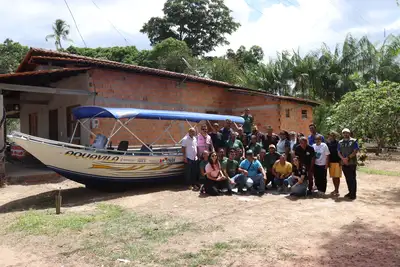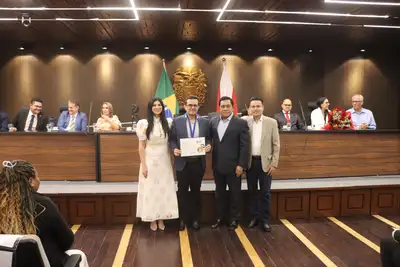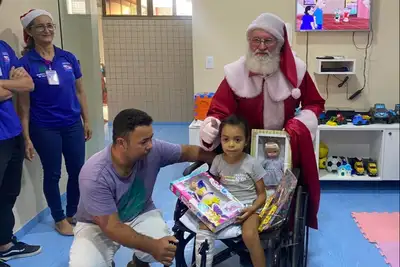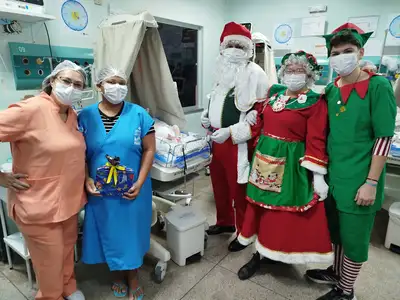Use of 'Hammock Therapy' Aids in the Rehabilitation of Newborns at Santa Casa
The method is used in the neonatal intensive care units (UTI-Neo) and neonatal intermediate care units (UCI-Neo) of the Santa Casa de Misericórdia do Pará Foundation (FSCMP)
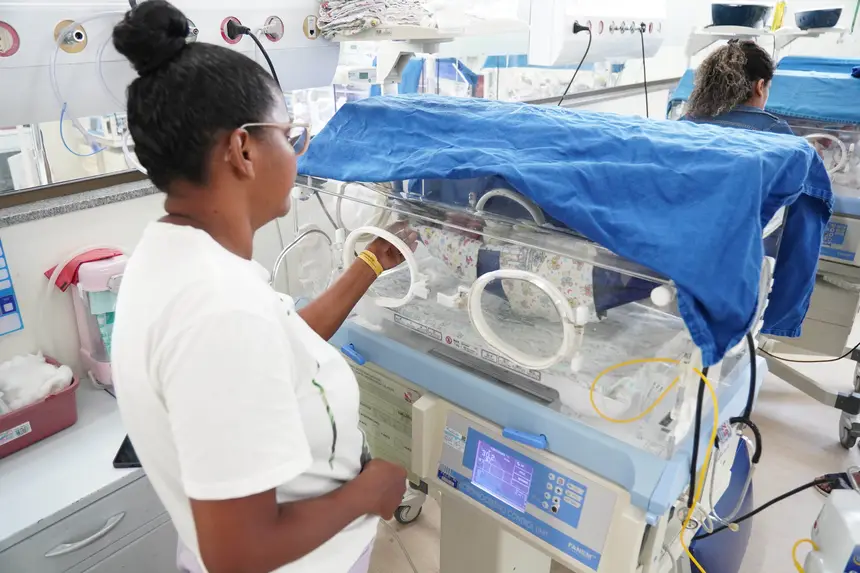
Known in Brazil as positioning or hammock therapy, the Hammock method is used in the neonatal intensive care units (UTI-Neo) and neonatal intermediate care units (UCI-Neo), with some children treated by the Santa Casa de Misericórdia do Pará Foundation (FSCMP).
"The Hammock method was developed to work with premature children, but since many of the children admitted to the ICUs and UCIs here at Santa Casa have neurological disorders and one of the functions of this method is neuropsychomotor development, we combined this with our reality here. So we started to treat, starting in 2021, children who have neurological malformations, where both the mothers and the children presented a considerable level of stress, so we began to work with the hammocks and saw the results," says physiotherapist Aureni Araújo.
The technique was created in Australia and began to be implemented in Brazil in the northeastern region of the country. There, scientific studies were also developed that demonstrated that the stress level and normalization of vital signs of premature infants placed in hammocks were favorable.
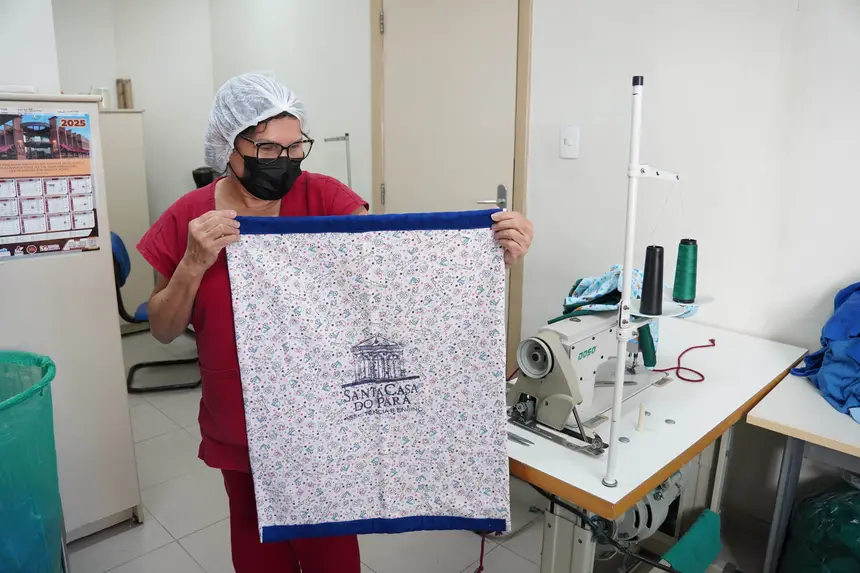
Aureni reports that the implementation of the hammock is a joint idea of the multidisciplinary team. “We who work with good practices here inside the neonatal intensive care unit and intermediate care, in addition to being allied with the Kangaroo Method, understood the importance of attention to low birth weight newborns, so that these children have the best quality of care here.”
"In addition to the experience of her (the child's) hospitalization, with the presence of the family. And we, based on the concepts of humanization and also therapy, seek to work to improve or reduce the stress of these children. And the use of the hammock is a good example of an approach,” added Aureni Araújo.
Salma Saraty, manager of the neonatology area of the Santa Casa Foundation, reports that the use of hammocks in the ICUs and UCIs resembles the humanized method of care. “It is similar to the nest that we have been using for a long time. The hammock cradles the baby, especially the premature baby, the one who leaves the womb prematurely, and the comfort of the hammock makes the child feel the same comfort they have inside their mother's belly. So, that way of cradling in the hammock or nest is also a way to make the child feel still inside their mother's womb.”
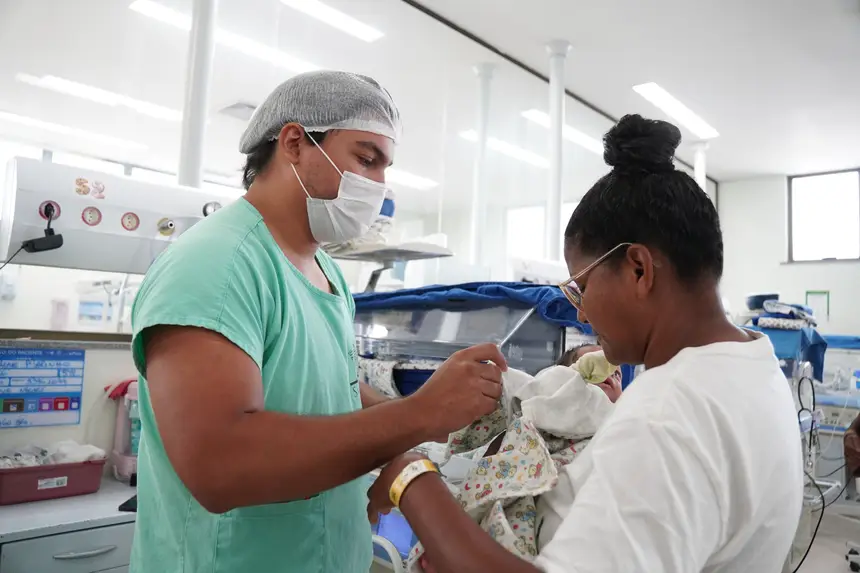
“He can move freely, but always stays cradled. This contributes to good neuromotor development of the child, to the development of the senses, sensory sensitivities, touch, affection, the cradling, so he has this type of feeling. And it is a method that follows the Kangaroo Method. It is a humanized method of care, especially for premature newborns. That baby who leaves their mother's belly, who leaves the comfort of the womb before time, before 37 weeks,” emphasizes Dr. Salma.
Partnership - Aureni Araújo informed that a process cooperation was made with the staff of the Hospitality Coordination of the Santa Casa Foundation (CHot), in addition to process interaction with the laundry staff, at the end of 2024 to the beginning of this year, for the use of some fabrics that were leftover from other applications to make hammocks for the babies.
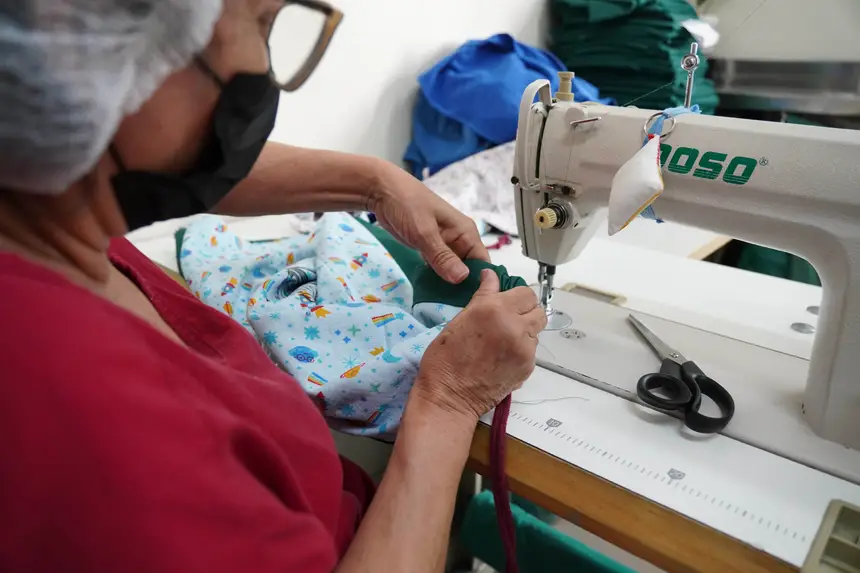
“This partnership with the CHot staff worked out. They delivered 21 hammocks to me, already well made. I took care of the part of making the handles for them and training the team for the use of these hammocks, and I believe that by August we will have a protocol to institutionalize the use of hammock therapy in a more assertive way for our premature newborns. This therapy can be performed both in the ICU and in the UCI and even in the Kangaroo Unit, with the presence of trained professionals,” emphasizes the physiotherapist.
For Maria Alves Belém, director of Technical Operational Assistance of the Santa Casa Foundation, the making of the hammocks by the hospitality department is based on the very objective of hospitality, to provide a better experience for the patient and their families. “The hammocks came from a provocation from the neonatal care area, because it is a therapy. So much so that it is called hammock therapy, which is a practice that has proven to be very effective in the care of newborns and neonatal units.”
“This therapy contributes to their recovery and development in a more humanized and welcoming way. And with this objective, the support areas always seek to add the need for assistance, and the hammocks come from this interaction. A process to ensure more humanized care at Santa Casa,” says the director.
Reference - The Santa Casa do Pará, one of the largest maternity hospitals in Brazil, provides differentiated care in its neonatology area. In this segment, the institution has 62 ICU beds (Intensive Care Unit) for neonates, 62 conventional UCI beds (Intermediate Care Unit), and 20 Kangaroo UCI beds. There are a total of 144 beds. The universe of professionals assigned to the sector totals 433 people, including doctors, nurses, technicians, and administrative agents.
The hospital admits about 2,300 newborns a year, making it the unit that offers the most neonatology services in the entire Northern Region and one of the largest in Brazil.
The doctor and manager of Neonatology at the Santa Casa Foundation, Salma Saraty, explains that the profile of care in the neonatology service is for high-risk newborns, low birth weight and extremely low birth weight premature infants, as well as those born with neurological, abdominal, or thoracic malformations, and children with severe perinatal asphyxia.
"The quality of care provided in neonatology has a direct impact on reducing the mortality rate of newborns in the institution. Therefore, we continue to actively participate in the strategies of the Ministry of Health such as the Baby-Friendly Hospital Initiative, with the kangaroo method that is based on humanized multidisciplinary care for premature newborns.”
Regarding the importance of humanized care, using the example of the use of hammocks, Salma Saraty emphasizes that there are studies showing nationally this use of the hammock, improving the neuromotor and sensory development of the child.
“This method contributes a lot: it reduces stress, because stress, for the newborn, causes brain injury, it is all bad. Excessive handling, noise, light, and the comfort of the hammock is similar to the comfort of the nest, the child feels as if they are in the womb. And this has a positive impact on the neurodevelopment of the baby,” says the doctor.






